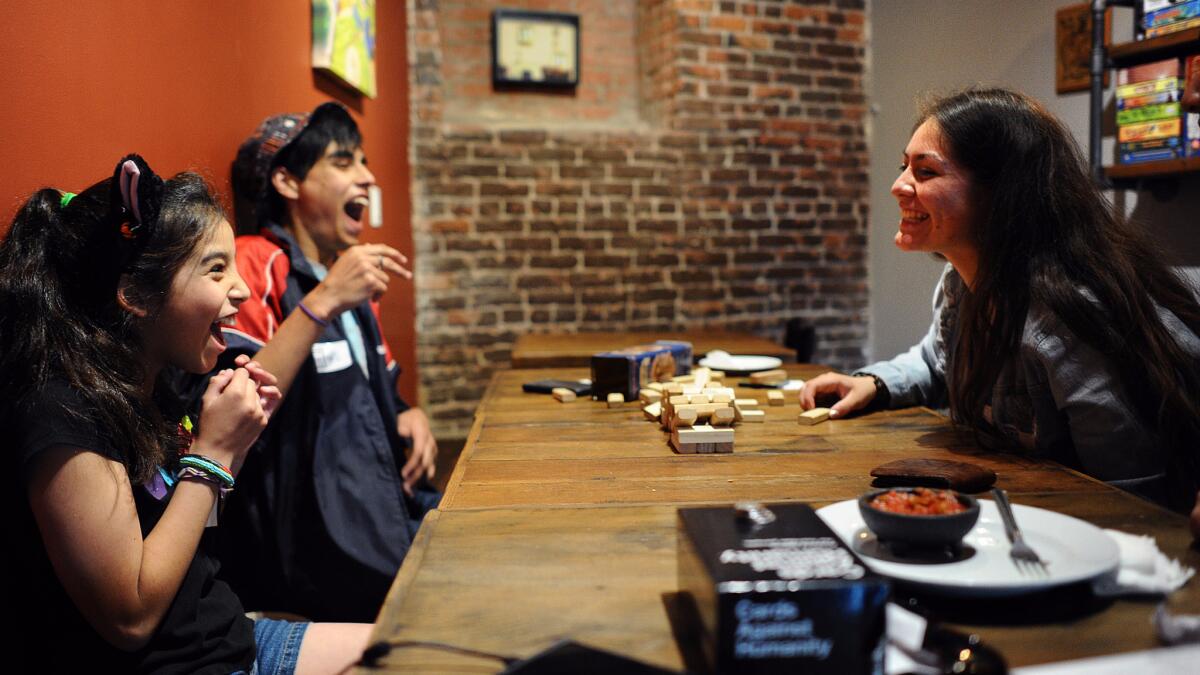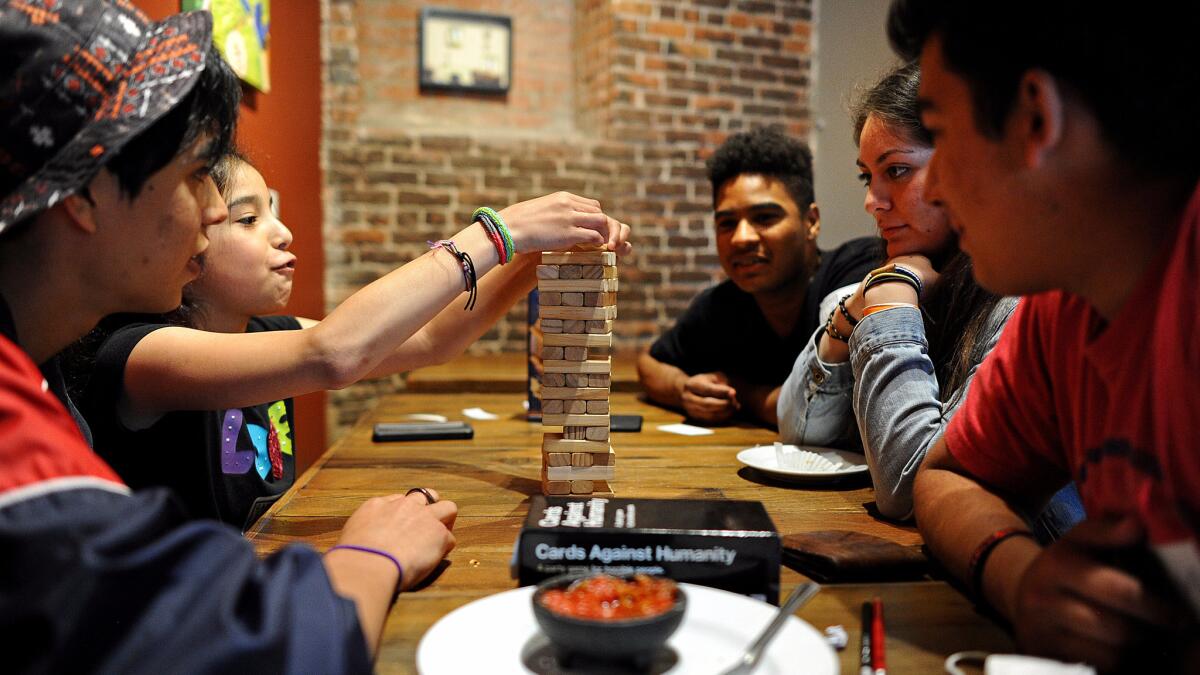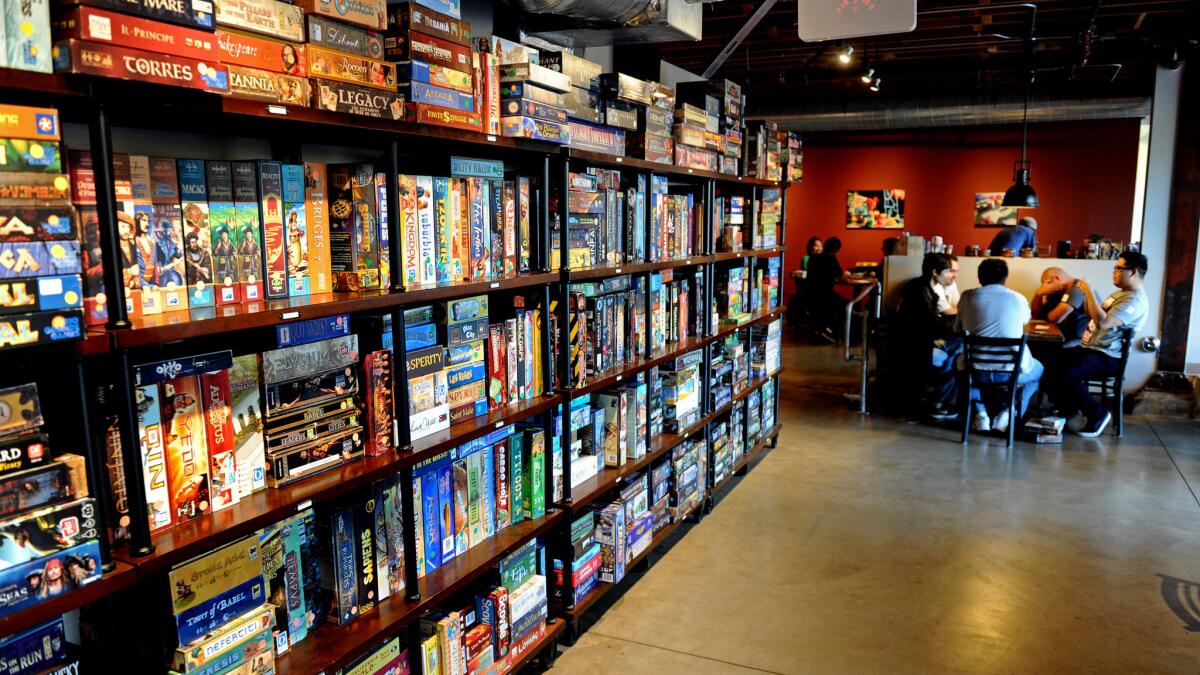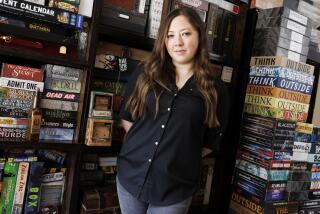This isn’t Candy Land: Exploding Kittens and others are reviving board and card games

After leaving his job as chief creative officer at Xbox, Elan Lee started tinkering with a new game.
It would have explosions, laser beams and nightmarish creatures. But unlike the video games he shepherded through production at Xbox, this one wouldn’t require hordes of developers or years to finish.
All it took to make “Exploding Kittens” was paper, cardboard and an idea.
“Games are back,” said Lee, whose card game has sold 2.5 million copies since its release last July. “I’ve been into games my whole life, and it’s so exciting to see that there’s a return.”
While video games hog the limelight, board and card games – known as tabletop games – are enjoying a quiet resurgence. Many are turning to these retro pleasures as a respite from the computers, gaming consoles and mobile devices thought to have rendered board games obsolete.

An old-school pastime is making a comeback: board games. That’s giving rise to venues like Glendale’s Game Haus Cafe, which boasts over 1,100 games.
Games and puzzles were the fastest-growing toy category last year, climbing 11% to $1.6 billion, according to the NPD Group. That streak continued into the first four months of 2016, with game sales jumping 24% -- four times the pace of the overall industry.
They remain small compared with the U.S. video game industry, which raked in $23.5 billion in sales in 2015. But giant toy makers Hasbro and Mattel have seen growth in games and puzzles even as other segments stumbled. And smaller game designers have found creative freedom producing off-line entertainment aimed at adults – and a surprisingly simple business model that often bypasses traditional retailers.
Board and card games are especially appealing to millennials, analysts said, because they crave face-to-face intimacy in an age when social interactions are often defined by disappearing SnapChats and tweets.
Games are back. I’ve been into games my whole life, and it’s so exciting to see that there’s a return.
— Elan Lee, “Exploding Kittens” creator
“The social nature of games is very attractive to people, especially younger people,” said Jason Moser, a toy analyst at the Motley Fool. “Games are a way to tap into that feeling that perhaps has been lost for a while because of the quick movement to mobile.”
Lee, a video game designer for 17 years, knows firsthand both the lure and the loneliness of digital games. When he left Xbox, he yearned to make something more social.
“I just had an overwhelming feeling the games I had been building for such a long time were very isolating,” Lee said. “They might be playing multi-player games, but they are sitting alone and staring at a screen.”
His card game was initially called “Bomb Squad” before Lee showed an early version to Matthew Inman, a friend and the creator of the popular comics website the Oatmeal. Inman loved the concept but suggested a twist: instead of bombs, the losing cards should show adorable felines stuck in explosive scenarios (chewing a mouthful of TNT or dancing on a nuclear missile launch pad).
Last year, the pair decided to raise $10,000 via the crowdfunding site Kickstarter – enough money to print 500 packs. The game ended up receiving nearly $9 million, attracting the most backers in Kickstarter history.

The costs of creating a board game are relatively low compared with a video game, which can require millions in the development phase. However, that calculus flips after the game is created. Video games are mostly downloaded nowadays, so there is no added manufacturing cost. Board games – especially those that come with figurines, spinners or other parts – can be costly to produce.
Game developers said a tabletop game typically nets between 30% and 50% profit. That’s compared to video games, which are 100% profit – after recouping development costs.
Kickstarter has emerged as a proving ground for tech-free games – and a way to eliminate upfront costs as backers pay in advance for copies. Games, of the off-line variety, have scored nearly $300 million in funding since the site launched in 2009, the company said.
Luke Crane, head of games at Kickstarter, said there’s been “a huge leap” in tabletop game design in recent years.
“Games are getting better – better design and components, with more thought,” Crane said. “And you have a hungry, hungry community with a lot of people with disposable income willing to support these designers.”
Before the rise of television, board games were once a popular national pastime. But as family game nights became TV time on the couch, few new titles enjoyed mainstream success.
Actor Wil Wheaton, the host of TableTop, a popular Web series about games, said the resurgence of board and card games started in the 1990s with the trading card game “Magic: The Gathering.” Many who grew up playing “Magic” are now enthusiastic consumers of other games.
“That brought gamers into the hobby who would have been really turned off by some of the byzantine war games that sort of dominated that space up to that point,” he said.

Imports from Europe, where designers had invented games of increasing complexity, also gained a following in the U.S. Strategic games such as “Settlers of Catan” and “Ticket to Ride” enticed players with an appetite for nuance instead of luck.
Board and card games have evolved from an “extremely nerdy, weird niche” into a mainstream hobby, said Max Temkin, 29, co-creator of “Cards Against Humanity” – the self-described game for horrible people.
Earlier this year, Temkin, along with two partners, raised nearly $1.5 million via Kickstarter for a separate game called “Secret Hitler,” a social deduction game inspired by the chaos of the 2016 presidential election and the Third Reich.
New games have even fueled the rise of game cafes and game nights at bars in cities around the country. At GameHaus Cafe in Glendale, a cavernous space filled with floor-to-ceiling shelves stuffed with games, there is often a wait list on the weekends to get in, co-owner Robert Cron said.
Tamara Henderson, 28, said she had a hard time meeting people after moving to Los Angeles until a boyfriend brought her to the cafe. After they broke up, she kept coming back to hang out with friends she’d met there.
“I got this place in the divorce,” the Culver City resident joked.
With so much grass-roots interest, companies with no background in games have jumped in.
Rooster Teeth, an online entertainment company with offices in Los Angeles, created a card game this year inspired by their popular Web series “A Million Dollars, But....” In short, the game asks players what they’d be willing to endure in exchange for a boatload of cash. (For example: Every time you sneeze, you teleport to somewhere in the world).
Classic board games, meanwhile, are finding a second life as mobile apps. “Monopoly” and the “Game of Life” consistently rank among the top-selling paid apps for iPhones and Androids.
Upstart game makers are cautious about mobile.
Lee of “Exploding Kittens” said he worried for a long time that an app would foster the kind of isolating experiences he hoped to alleviate (“Cards Against Humanity” has avoided mobile for that reason, Temkin said). “Exploding Kittens” debuted in January as the top-selling paid app in the Apple store and still hovers in the top 20. It does not feature a single-player mode.
Smartphone versions of board and card games can often act as a gateway for younger players to rediscover the tabletop, said Moser of the Motley Fool.
Moser said his two daughters, ages 10 and 11, first encountered “Trivial Pursuit” as a mobile app. Then they became fans of the version that comes in a box.
“They like the games on their devices when they are playing by themselves,” he said. “When they are with groups of people, they definitely like the physical games.”
Follow @ByShanLi on Twitter
ALSO
How a Hollywood startup became Microsoft’s partner in the marijuana industry
Hiltzik: Elon Musk’s Tesla-SolarCity deal makes a lot of sense — but only for Elon Musk
Orange County home prices rise above their 2007 bubble-era peak
More to Read
Inside the business of entertainment
The Wide Shot brings you news, analysis and insights on everything from streaming wars to production — and what it all means for the future.
You may occasionally receive promotional content from the Los Angeles Times.











